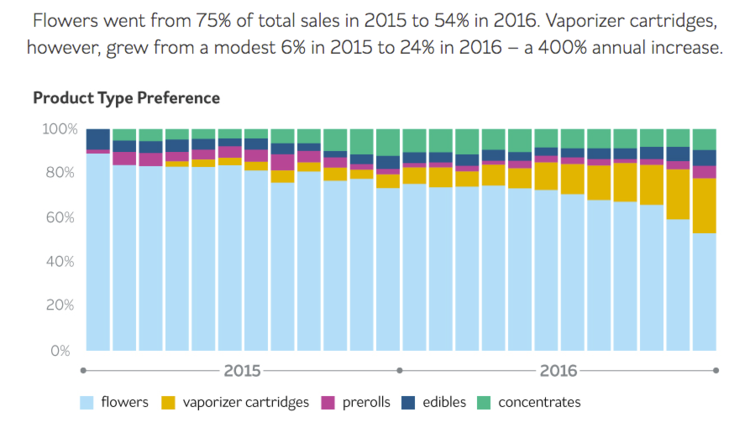Combustion methods such as smoking have been a commonplace form of consumption for some time, but as we find ourselves drawing closer to legalization, an increasingly popular method of consumption has presented itself through cannabis vaping, or vaporization. This method involves heating cannabis at a lower temperature, allowing consumers to inhale the cannabinoids and terpenes as a vapor instead of a smoke.
Depending on the type of vaporizer used, dried cannabis flower or concentrates can be consumed. The most popular form of vaporizer currently found on the illegal market is a vape pen containing a ceramic core, small battery, and cartridge of cannabis concentrate. Cannabinoids begin to vaporize at 284°F compared to 446°F through combustion methods. There are two different heating mechanisms to achieve vaporization:
Health Canada has chosen not to include concentrates and vaporizers among the list of cannabis products that will be deemed legal come October 17, citing that the health effects still need to be properly understood. Instead, the Federal Government plans to adapt Bill C-45 within a year to include concentrates, though companies involved in the manufacture of vape pens are lobbying for this too happen sooner.
North America’s current largest legal cannabis market, California, has seen unexpected growth within the vaporizer category. With sales percentages increasing from 6% in 2015 to 24% in 2016, vaporizer cartridges have become the fastest growing category among cannabis product types. Similar numbers have been seen in Colorado, Washington, and Oregon, where recreational cannabis is also legal.

With these cannabis vaping trends appearing simultaneously across legal recreational markets within the United States, it would not be surprising that numbers within Canada follow suit. dicentra Cannabis Consulting has the experience and resources necessary to ensure your vaping products successfully navigate the regulatory requirements associated with medicinal cannabis (potentially as a medical device) or Health Canada licensing, pending further guidance from Health Canada for recreational products. If you have questions about the regulatory hurdles associated with licensing your vaping product, contact dicentra and let’s get started! 1-866-647-3279 or info@dicentra.com.
dicentra Cannabis Consulting is committed to keeping both current and prospective clients well informed and educated on the Cannabis Act and the cannabis regulatory framework. We are committed to providing you with news, updates and information as the Cannabis Act and the Cannabis Regulations come into force on October 17, 2018 (and into the future). For any cannabis related questions, please contact us by phone at 1-866-647-3279 or via email at info@dicentra.com.
References